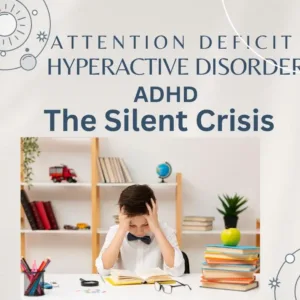Introduction :
Estrogen, often referred to as the “female hormone,” plays a crucial role in many bodily functions throughout a woman’s life. It’s not just about reproduction; estrogen is a multifaceted hormone that influences everything from physical development to mood regulation.
Types of Estrogen:
The three major natural estrogens in the female body are estrone (E1), estradiol (E2), and estriol (E3), each with its own characteristics and dominance throughout different life stages.
Estradiol (E2):
The Mighty One: Estradiol takes the crown for the most potent form, especially during a woman’s reproductive years. It plays a key role in regulating the menstrual cycle, promoting egg development, and thickening the uterine lining for potential pregnancy.
Life Cycle: Estradiol levels fluctuate throughout the menstrual cycle, peaking just before ovulation when an egg is released. After menopause, when estrogen production by the ovaries declines, other tissues like fat cells take over Estradiol production, but at a much lower level.
Beyond Reproduction: Estradiol has functions beyond reproduction. It influences bone health, maintains healthy cholesterol levels, and contributes to cognitive function.
Estrone (E1):
The Weaker Sibling: Compared to Estradiol, Estrone is a less potent form. However, it becomes the primary circulating estrogen after menopause when the ovaries significantly reduce its production.
Made from Others: Estrone is mainly produced from the conversion of other hormones in the body, particularly androstenedione, a hormone produced in the adrenal glands and fat tissue.
Still Plays a Role: Even though weaker, Estrone contributes to some of the same effects as Estradiol, including maintaining bone health and cardiovascular function.
Estriol (E3):
The Pregnancy Champion: Estriol takes center stage during pregnancy, produced in large amounts by the placenta. It helps support fetal development and prepares the body for childbirth.
Weakest but Essential: Although the weakest among the three, Estriol plays a vital role in pregnancy. It also helps protect the mother from the stronger effects of Estradiol on the developing baby.
Fades After Pregnancy: After pregnancy, Estriol levels plummet as the placenta is no longer present.

Estrogen’s Symphony of Functions:
Estrogen’s influence extends far beyond reproduction. Here’s a glimpse into its diverse roles:
-
Sexual Development:
During puberty, It drives the development of female secondary sex characteristics like breast growth, widening of the hips, and pubic hair growth.
-
Reproductive System:
It stimulates the growth and thickening of the uterine lining (endometrium) in preparation for pregnancy. It also plays a role in regulating the menstrual cycle.
-
Bone Health:
It is essential for maintaining strong bones. It helps regulate calcium absorption and prevents bone loss.
-
Cardiovascular Health:
It may have a protective effect on the heart and blood vessels, reducing the risk of heart disease in premenopausal women.
-
Brain Function:
Estrogen receptors are present in the brain, and it plays a role in cognitive function, memory, and mood regulation.
-
Skin Health:
It contributes to healthy skin by maintaining hydration, elasticity, and collagen production.
The Ebb and Flow of Estrogen:
Its level naturally fluctuate throughout a woman’s life:
- Puberty: Its level rise significantly during puberty, triggering sexual development.
- Reproductive Years: Its level fluctuate within the menstrual cycle, peaking around ovulation.
- Pregnancy: During pregnancy, estrogen levels surge dramatically to support fetal development and prepare the body for childbirth.
- Perimenopause and Menopause: As women approach menopause, Its production by the ovaries declines significantly. This decline is associated with menopausal symptoms like hot flashes, vaginal dryness, and mood swings.
Vitamins To Increase Estrogen Levels :
- B vitamins: B vitamins are important for the creation and use of estrogen in the body. Consider a B-complex supplement.
- Vitamin D: This vitamin acts like a hormone and plays a role in production.
- Vitamin E: While research is ongoing, some studies suggest vitamin E may help reduce symptoms associated with low estrogen, like hot flashes.
Remember, it’s always best to consult a doctor before taking any supplements, especially if you have any underlying health conditions.
Understanding Estrogen and Your Health:
Unveil the power within! Understanding estrogen is the key to unlocking a vibrant you. This essential hormone plays a starring role in your health, influencing everything from strong bones and radiant skin to a balanced mood. By delving into the world of estrogen, you can optimize your well-being and navigate life’s stages with confidence and grace.
Estrogen plays a vital role in a woman’s overall health and well-being. By understanding its functions and how its level fluctuate throughout life, women can make informed decisions about their health.
For instance, maintaining a healthy lifestyle with a balanced diet and regular exercise can positively impact hormonal levels. Additionally, hormone replacement therapy (HRT) might be considered under medical supervision for women experiencing significant menopausal symptoms due to low levels.
The Takeaway:
Estrogen is more than just a reproductive hormone. It’s a conductor in the orchestra of a woman’s health, influencing everything from bone density to mood. By understanding how it works, women can navigate different life stages with greater awareness and take proactive steps to support their overall well-being.
Frequently Asked Questions (FAQs) :
What is estrogen?
It is a group of hormones essential for many bodily functions in both women and men, although at different levels. In women, estrogen plays a key role in: Reproductive health: Regulating the menstrual cycle, preparing the body for pregnancy, and maintaining breast development. Bone health: Promoting bone growth and strength. Cardiovascular health: Protecting blood vessels and potentially reducing heart disease risk. Skin and hair health: Contributing to moisture retention and hair growth.
What are normal estrogen levels?
What are the signs of estrogen imbalance?
An imbalance is either too high or too low, can cause various symptoms. Here are some common ones: High estrogen: Weight gain, irregular periods, mood swings, breast tenderness, vaginal discharge. Low estrogen: Vaginal dryness, hot flashes, night sweats, difficulty sleeping, decreased libido, bone loss (post-menopause).
What can cause estrogen imbalance?
Several factors can contribute to it imbalance, including: Menopause: The natural decline in production after menopause. Birth control pills: Some types of birth control can contain synthetic hormones that affect its level. Weight: Obesity can lead to higher levels. Medical conditions: Certain medical conditions like Polycystic Ovary Syndrome (PCOS) can disrupt hormonal balance.
How is estrogen imbalance treated?
Treatment for imbalance depends on the underlying cause and your specific symptoms. Options may include: Hormone replacement therapy (HRT): This can involve estrogen alone or combined with progesterone to manage menopausal symptoms. Lifestyle changes: Maintaining a healthy weight, eating a balanced diet, and exercising regularly can help regulate hormones. Medications: Depending on the cause of the imbalance, medications might be prescribed to address the underlying condition.
What are the risks of estrogen therapy?
HRT can have some side effects, like blood clots, stroke, and certain cancers. However, the risks are generally low for healthy women using it for short-term symptom relief. It's important to discuss the risks and benefits with your doctor to determine if HRT is right for you.



